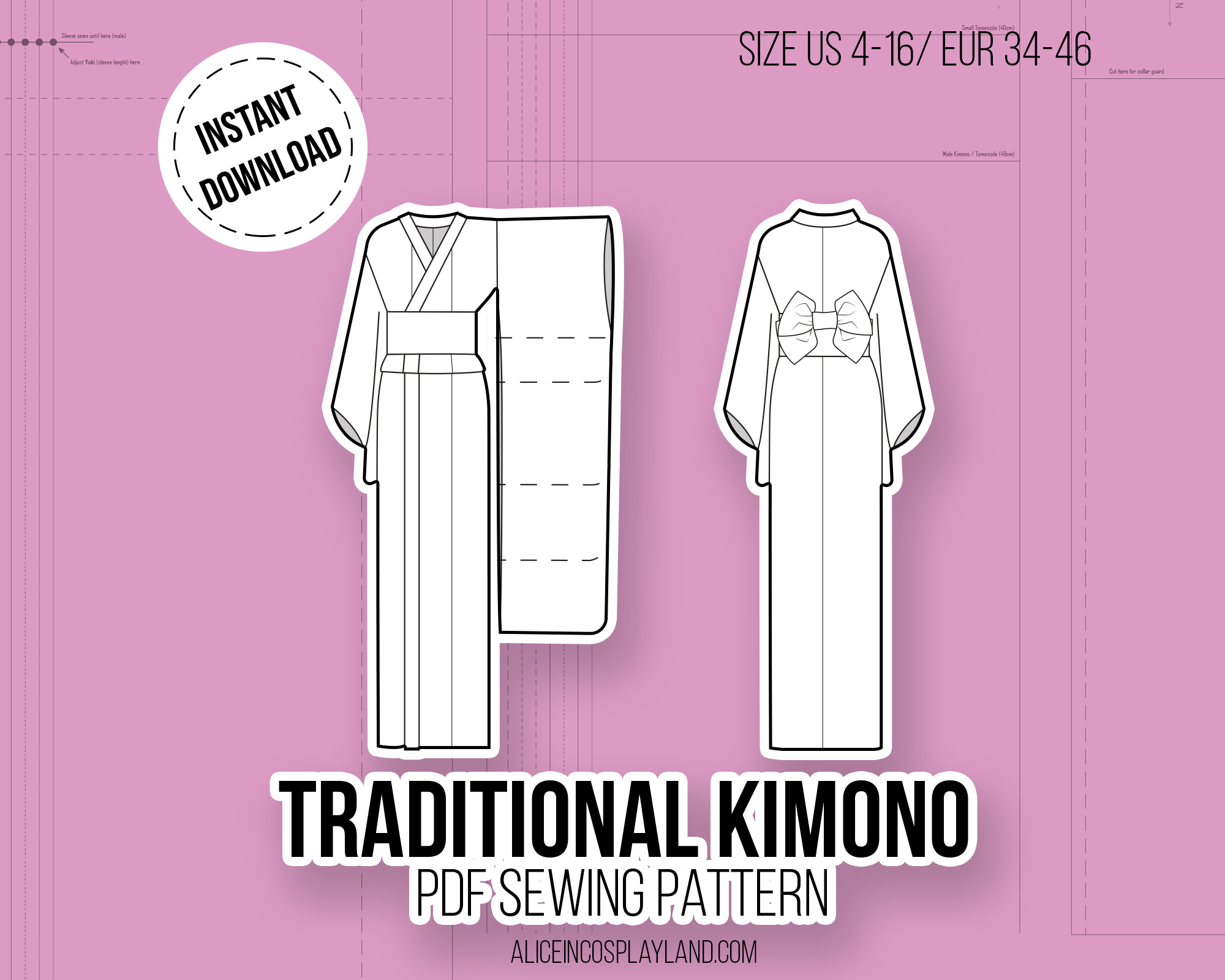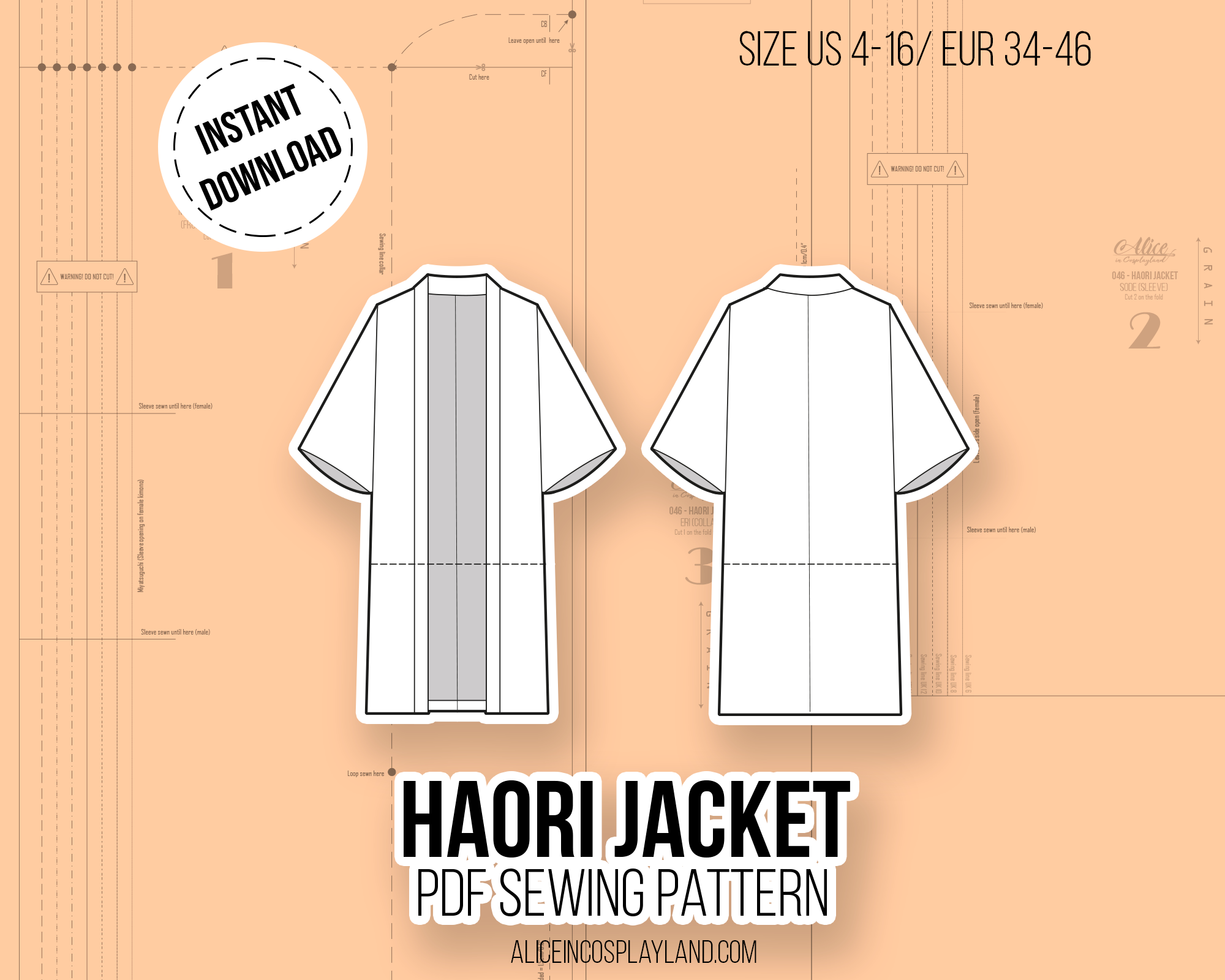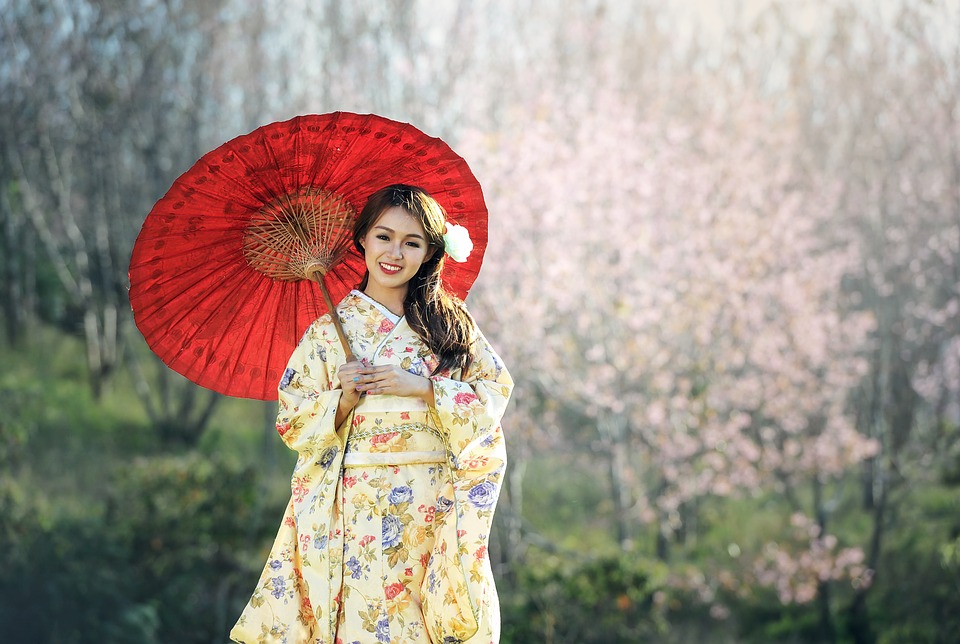
Did you know there are many different types of kimono? The kimono is a Japanese traditional garment. Nowadays they are worn in fomal occassions and ceremonies. They are usually made of silk or similar fabrics. You shouldn’t mistake them for a yukata, which has a similar shape but is made of cotton and worn in festivals and informal occassions. Not long ago I made my first kimono for a cosplay and I got so much information that I want to share it with you. Here you have a description of the different types of kimonoa you can find and when to use it.
¿Sabíais que hay muchos tipos diferentes de kimonos? El kimono es una prenda tradicional japonesa. Hoy en dia se llevan en ocasiones formales y celebraciones. Normalmente están hechos de seda o telas similares. No hay que confundirlos con un yukata, que tiene una forma similar pero está hecho de algodon y se lleva en festivales y ocasiones informales. No hace mucho hice mi primer kimono para un cosplay y recopilé tanta información que la quiero compartir con vosotros. Aquí tenéis una descripción de los diferentes tipos de kimono que se pueden encontrar y cuando usarlos.
Types of kimonos
| Furisode Status: unmarried Occassion: Very formal Patterns: whole piece Other: very long sleevesHoumongi Status: married and unmarried Iromuji Status: married and unmarried Komon Status: married and unmarried Mofuku Status: married and unmarried Status: married and unmarried Kurotomesode Status: married Tsukesage Status: married and unmarried Uchikake Status: married and unmarried Susohiki / Hikizuri Status: married and unmarried Junihitoe Status: married and unmarried Shiromuku Status: bride Kyoukatabira Status: deceased |
| Furisode Status: soltera Ocasion: Muy formal Estampado: pieza entera Otros: mangas muy largasHoumongi Status: casada o soltera Iromuji Status: casada o soltera Komon Status: casada o soltera Mofuku Status: casada o soltera Status: casada o soltera Kurotomesode Status: casada Tsukesage Status: casada o soltera Uchikake Status: casada o soltera Susohiki / Hikizuri Status: casada o soltera Junihitoe Status: casada o soltera Shiromuku Status: novia Kyoukatabira Status: difunta |
If you are passionate about Kimonos and Japanese garments and would try to make your own, I made a collection of Japanese patterns using real traditional techniques. Make sure you check them out in the shop tab.





